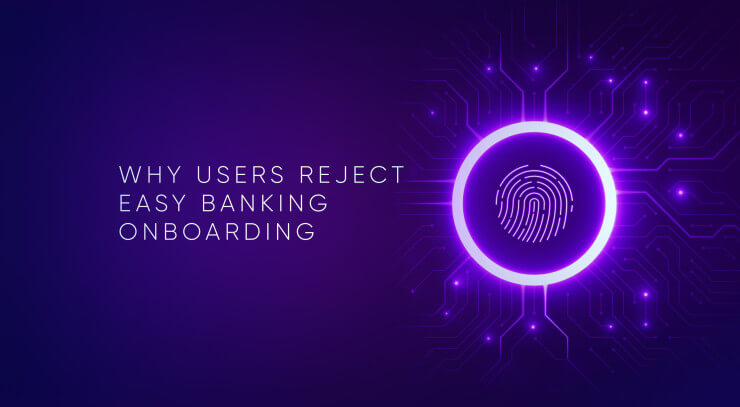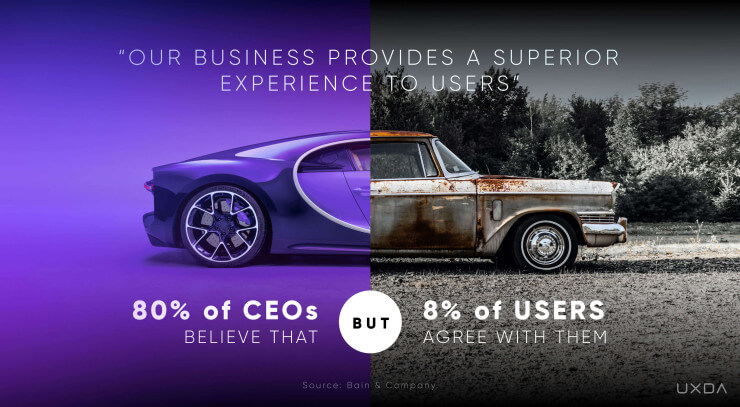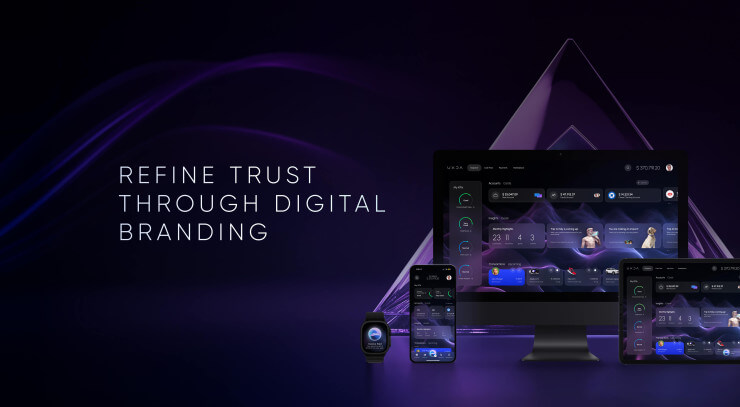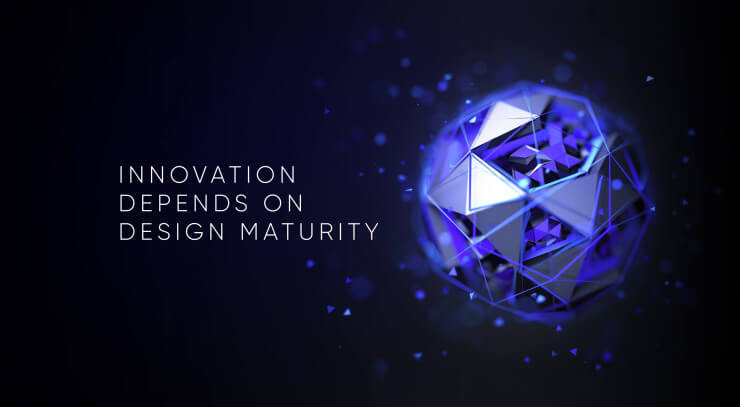The financial industry is experiencing a massive adoption of advanced technologies. Cloud banking, mobile banking, embedded banking, AI banking, machine learning, blockchain, biometrics, etc. But how prepared are traditional players? Could it be that, despite all their experience, resources, confidence and influence, they will fail banking customers, leaving them stuck in the “digital” space as NASA astronauts? The standoff between Boeing and SpaceX in space suggests that this is entirely possible, but there is a solution.
NASA made a tough call on August 24, 2024: it was too risky to bring two astronauts, Butch Wilmore and Suni Williams, back from the International Space Station (ISS) in Boeing’s troubled new capsule. Instead, the astronauts will have to wait until February 2025 to return with SpaceX. What was supposed to be an eight-day test flight has now stretched into eight months.
Boeing’s Starliner capsule, which transported astronauts Suni Williams and Butch Wilmore to the ISS in June, has faced significant issues. Boeing claims to bring the astronauts home, but NASA doesn't trust them. Helium leaks and failed thrusters marred its first crewed test flight, revealing deeper problems within the company’s operations.
Despite years of development and a $4.2 billion contract from NASA's Commercial Crew Program, Boeing still hasn’t completed a successful crewed mission. In contrast, SpaceX, with a $2.6 billion contract, achieved this milestone faster, more cost-effectively and with greater success.
As we see, Boeing, a long-standing leader in aerospace, finds itself increasingly outpaced by SpaceX, a newer, more agile competitor. Despite its deep expertise, Boeing is hindered by legacy systems and bureaucratic processes that slow down innovation. SpaceX, starting from scratch, embraced a culture of innovation and risk-taking, allowing it to achieve significant milestones, such as the development of reusable rockets, more quickly than Boeing.
This struggle between Boeing and SpaceX serves as a powerful analogy for what’s happening in the banking sector today. Traditional banks—like Boeing in space—could face challenges in the new, digital environment that is rapidly redefining the financial industry.
The Banking Parallel: Newcomers vs. Industry Giants
Traditional banks, with their deep-rooted brand histories, cultures and legacy systems, have long dominated the financial landscape. But these very advantages have become their Achilles' heel. Laden with bureaucracy and the weight of outdated operating models, these banks are often slow to innovate and adapt. They are like Boeing, which, despite its expertise and decades of leadership in aerospace, finds itself burdened by older, rigid systems and approaches that stifle agility.
Digital-first neobanks, similar to SpaceX, have a distinct advantage—they started with a clean slate.
On the other hand, digital-first neobanks, like SpaceX, have a distinct advantage—they started with a clean slate. Unlike traditional banks, which are burdened by legacy systems, neobanks were built from the ground up with a modern core, focusing on customer experience, agility and rapid adaptation to market needs. These Fintechs, unburdened by legacy systems, have been able to quickly iterate on their offerings, providing seamless, tech-driven solutions.
Nubank, Revolut and Cash App, for example, have quickly gained popularity by offering a user-friendly experience that resonates with today’s digital-native consumers. They have capitalized on the growing demand for mobile banking, low fees and innovative financial products. Their platforms are designed to be intuitive, fast and accessible—qualities that are increasingly important to consumers who expect the same level of service from their banks as they do from tech giants like Apple, Amazon, Facebook or Google.
The numbers tell a compelling story. In just ten years, these neobanks have onboarded 220 millions of clients, as many as the top three U.S. banks in a century: Bank of America, Chase and Wells Fargo. This rapid growth underscores the shift in consumer preferences and highlights the effectiveness of the neobank model in meeting those needs. Emphasis on user-friendly digital platforms, lower fees and innovative services rewrites the rules of the industry, just as reusable rockets from Space X are revolutionizing space travel.
Traditional banks are not blind to these shifts. Some, like ING, have aggressively pursued digital transformation. In Ralph Hammer's legendary interview with The Banker in 2017, he stated: “The way we want to portray ourselves is as a tech company with a banking license. We built a bank around the internet rather than the internet around our bank.” This strategy of creating a global digital platform and developing a financial ecosystem reminiscent of Amazon or Facebook demonstrates the understanding that the future of banking is undoubtedly digital.
Another example, Mashreq Bank, has adopted a “cloud-native” strategy and has partnered with Fintechs to enhance agility and customer experience. The Mashreq Bank share price increased by 300% in 3 years.
Yet, the question remains: can traditional banks truly innovate in time, or will they be eclipsed by the nimble Fintechs that are not just changing the game but rewriting the entire playbook?
The Danger of Not Being Ready to Innovate
Like Boeing, traditional banks are encumbered by outdated systems and bureaucratic inertia. Their legacy technology, often developed decades ago, is not easily adaptable to the demands of the modern digital economy. Moreover, the regulatory environment in which they operate adds another layer of complexity, making it difficult for them to pivot quickly or experiment with new business models.
These banks also face the challenge of shifting customer expectations. Today’s consumers are not just comparing banks to other banks—they are comparing their banking experience to their experience with leading tech companies. When a customer can open an account in minutes with a neobank, receive personalized financial advice via an app and pay virtually no fees, traditional banks seem slow and cumbersome in comparison.
An outdated approach from traditional banks could be perilous for consumers, particularly as more advanced innovations are introduced into the financial ecosystem. Just as space can be unforgiving for astronauts, the digital environment can be equally dangerous for banking customers, if not managed properly. According to the FBI's annual Internet Crime Report, losses connected to cybercrime reached a staggering $12.5 billion in 2023. This figure is likely to escalate as technologies like artificial intelligence (AI) become more prevalent.
The danger lies in the complexity and interconnectedness of modern technology. As banks and consumers increasingly rely on AI, blockchain and other cutting-edge technologies, the potential points of failure multiply. An outdated approach to technology and cybersecurity in traditional banks can lead to significant vulnerabilities. These include outdated cybersecurity protocols, insufficient encryption standards and a lack of real-time monitoring capabilities.
As technologies become more complex, the risks associated with them also grow. If traditional banks fail to modernize their systems and adopt robust cybersecurity measures, they could leave their customers exposed to a wide range of threats—from data breaches to sophisticated phishing attacks. The consequences of such breaches are not just financial; they can erode customer trust, damage reputations and lead to long-term business losses.
Moreover, as AI continues to evolve, it could be used to both enhance security and exploit weaknesses in outdated systems. Criminals may use AI to launch more targeted and effective attacks, making it even more critical for banks to stay ahead of the curve. If traditional banks do not adapt quickly, they risk not only their own survival but also the safety and security of their customers in the industry with zero tolerance for failure.
The more we depend on advanced technologies, the more vulnerable we become.
In essence, the more we depend on advanced technologies, the more vulnerable we become. Especially if those technologies are not adequately safeguarded. An outdated approach is not just a business risk; it’s a direct threat to the financial well-being of millions of consumers.
How to Shift Your Approach From "Boeing" to "SpaceX"
To shift from a "Boeing" approach to a "SpaceX" innovative approach, traditional banks and financial companies need to undergo a fundamental transformation in both their mindset and operations. Based on UXDA's experience collaborating on the design of over 150 financial products in 37 countries, we have identified 10 key differences in "SpaceX" approach and specific actions to take:
1. Implement a First Principles Approach
- Deconstruct Existing Processes: Start by deconstructing existing banking processes and systems to their most basic components. Question every assumption—why things are done a certain way, the necessity of each step and the real cost of these actions. For example, instead of asking how to improve the current loan approval process, ask what the core purpose of the process is and how it could be entirely reimagined using today’s technology.
- Rebuild from the Ground Up: Once you’ve identified the fundamental elements, rebuild processes using modern technologies and innovative thinking. For instance, if the goal is to reduce loan approval time, explore how AI-driven credit assessments and blockchain for secure data handling can create a process that’s faster, more transparent and less costly.
- Challenge Industry Norms: Use the First Principles approach to challenge industry norms. Why must certain banking services be delivered in traditional ways? By questioning these norms, banks can discover more efficient, customer-friendly methods. For example, instead of asking how to improve branch banking, question whether physical branches are necessary at all in the digital age.
- Cost Efficiency and Innovation: By applying First Principles, banks can often reduce costs and drive innovation. SpaceX, for example, used this approach to drastically reduce the cost of space travel by rethinking rocket design and manufacturing. Similarly, banks can apply this thinking to reduce operational costs and introduce breakthrough products.
2. Get Rid of Self-Deception
- Acknowledge Vulnerabilities: Just as Boeing was confident it could bring astronauts back safely, only for NASA to decide it was too risky, banks often operate under the assumption that they have everything under control. However, the 2008 financial crisis and the collapse of Silicon Valley Bank in 2023 reveal the dangers of this mindset. Banks must honestly assess their vulnerabilities, including outdated systems, poor user experience, risky portfolios and potential blind spots in governance.
- Embrace External Audits and Stress Tests: Regularly subject the bank’s operations, financial health and risk management practices to rigorous external audits and stress tests. These assessments should be taken seriously, with no assumptions of guaranteed success. Stress tests should not only meet regulatory requirements but should also challenge the bank’s own comfort zones by simulating extreme but plausible scenarios.
- Foster a Culture of Transparency: Encourage a culture in which bad news and potential problems can be openly discussed without fear of repercussion. Often, warning signs are ignored or downplayed because of internal pressures or a desire to maintain a positive image. Leaders should welcome dissenting opinions and critical feedback, viewing them as opportunities for improvement rather than threats to their authority.
- Learn from Failures, Both Internal and External: Instead of assuming "it can’t happen to us," banks can closely study failures within the industry—like the Boeing incident, the Silicon Valley Bank collapse or the “fat-finger” Citi error—to understand the root causes and apply those lessons proactively. This includes reassessing risk models, updating crisis management plans and ensuring that contingency plans are robust and actionable.
- Engage Independent Risk Committees: Establish or strengthen independent risk committees that report directly to the board with the power to challenge executive decisions. These committees could have the authority to flag issues and enforce corrective actions without bias or interference from the bank’s leadership.
3. Adopt a Digital-First Culture
- Agility Over Bureaucracy: Traditional banks need to break down silos and reduce bureaucracy. This can be achieved by adopting agile methodologies across the organization. Cross-functional teams, or "squads," should be empowered to make decisions and innovate quickly, much like tech companies.
- Continuous Learning and Upskilling: Encourage a culture of continuous learning. Employees at all levels should be trained in digital tools, data analytics and new technologies. This ensures that the workforce is not just adapting to change but driving it.
- Leadership Buy-In: Ensure top executives fully support the digital transformation. Leadership should champion digital initiatives, setting a clear vision and allocating resources to drive change.
- Cultural Shift Programs: Implement programs that promote a shift in organizational culture. These could include workshops, hackathons, and internal innovation labs to foster a mindset of digital-first thinking across all departments.
4. Invest in Technology Infrastructure
- Legacy System Overhaul: Modernize or replace outdated core banking systems. This could involve moving to cloud-based solutions, which offer greater scalability, flexibility and cost-efficiency. Mashreq Bank’s cloud-first banking strategy is a good example.
- API-Driven Architecture: Implement an API-driven architecture to allow for better integration with Fintechs, third-party services and new technologies. This will enable banks to rapidly deploy new products and services.
- Data Management and Analytics Platforms: Invest in advanced data management systems and analytics platforms. This will enable the bank to harness big data for real-time insights, improving decision-making and customer personalization.
- Cybersecurity Enhancement: Strengthen cybersecurity measures to protect against increasingly sophisticated digital threats. This includes implementing advanced encryption, AI-driven threat detection, and regularly updating security protocols.
5. Customer-Centric Innovation
- Personalization and Data Analytics: Leverage big data and AI to offer personalized banking experiences. Banks should use customer data to tailor products and services, similar to how tech companies like Netflix personalize content.
- Seamless User Experience: Focus on delivering a seamless, user-friendly digital experience. This includes optimizing mobile apps, simplifying online banking interfaces and ensuring that all digital touchpoints are intuitive and efficient.
- Customer Journey Mapping: Conduct detailed customer journey mapping to identify pain points and opportunities for improvement. Use these insights to design services that enhance the overall customer experience.
- Omni-Channel Integration: Ensure seamless integration across all customer channels. This creates a consistent and convenient experience, allowing customers to switch between channels without disruption.
6. Embrace an Experimental Mindset
- Rapid Prototyping and Testing: Encourage rapid prototyping and iterative testing of new products. Fail fast, learn fast. This approach, similar to SpaceX’s iterative design and testing process, allows for quicker innovation cycles.
- Risk-Tolerant Environment: Create a risk-tolerant environment in which calculated risks are encouraged. Reward innovation and be willing to pivot quickly if a project isn’t working, rather than letting it drag on.
- Innovation Labs: Establish innovation labs dedicated to exploring emerging technologies and creating prototypes. These labs should have the autonomy to experiment with new ideas without the constraints of traditional banking processes.
- Internal Startups: Encourage the development of internal startups within the bank. These small, agile teams can focus on specific innovations, operating with the freedom and speed of a startup, but with the bank's backing and resources.
7. Strategic Partnerships and Ecosystem Building
- Collaborate with Fintechs: Rather than viewing Fintechs as competitors, banks should partner with them to enhance their offerings. This can include white-labeling Fintech solutions or acquiring Fintech startups that complement the bank’s strategy.
- Platform-Based Business Models: Transition toward a platform-based business model in which the bank is not just a provider of financial products but a hub for various financial services. This could involve creating marketplaces in which third-party providers can offer services to the bank’s customers.
- Venture Capital Arm: Create a venture capital arm to invest in promising fintech startups. This not only supports innovation but also provides early access to cutting-edge technologies and ideas that can be integrated into the bank’s operations.
- Co-Development Initiatives: Engage in co-development initiatives with fintechs and tech companies. Collaborate on joint projects that leverage each partner’s strengths, such as developing new digital payment solutions or AI-driven customer service tools.
8. Adopt a Fail-Fast, Learn-Fast Approach
- Pilot New Innovations: Launch new products and services in controlled pilot programs. This allows the bank to gather feedback, refine the offering and scale quickly if successful.
- Iterative Development: Use iterative development processes in which products are continuously improved based on real-time customer feedback. This reduces the time from idea to market.
- Customer Feedback Loops: Implement continuous feedback loops with customers to quickly identify issues and iterate on products. This ensures that the bank’s offerings remain aligned with customer needs and market demands.
- Minimum Viable Products (MVPs): Focus on launching MVPs to test new concepts in the market rapidly. By quickly bringing a simplified version of a product to market, the bank can gather valuable insights before committing to full-scale development.
9. Reinvent the Organizational Structure
- Flat Hierarchies: Flatten the organizational structure to reduce the layers of management that slow down decision-making. Empower frontline employees to make decisions and innovate.
- Decentralized Decision-Making: Decentralize decision-making authority, allowing individual teams to act more autonomously. This speeds up innovation and response times to market changes.
- Flexible Workforce Models: Adopt flexible workforce models, including remote work options and gig economy partnerships, to attract and retain top talent. This flexibility can also help the bank scale resources up or down based on project needs.
- Innovation Champions: Designate "innovation champions" across different departments who are responsible for driving and nurturing new ideas. These champions act as change agents, promoting a culture of innovation throughout the organization.
10. Focus on Ecosystem Integration
- Open Banking Initiatives: Embrace open banking and API standards to enable collaboration with Fintechs and third-party providers. This can turn a traditional bank into a more versatile financial services platform, integrating a wider range of services and products for customers.
- Financial Ecosystems: Create or join financial ecosystems that offer a broad range of services beyond traditional banking. This could include insurance, investments and lifestyle services, all accessible through a single platform.
- Partnership Marketplaces: Develop a partnership marketplace where third-party providers can offer complementary services through the bank’s platform. This could include financial planning tools, investment options, and even non-financial lifestyle services like travel booking.
- API Monetization: Explore monetizing the bank’s APIs by allowing third parties to access the bank’s data and services for a fee. This can create new revenue streams while fostering innovation through collaboration.
Conclusion: Save Banking Customers in Digital "Space"
Imagine being stranded in the vast, cold expanse of space, with no clear direction or support. Now, imagine that space is your bank's customer experience. Just like an astronaut relies on NASA to guide them safely back to Earth, your customers rely on your bank to navigate their financial journey. If they feel lost, unsupported, or abandoned, they may drift away, potentially never to return.
Traditional banks should ask themselves: Are we truly prepared to safeguard our customers in this new digital "space"? Just as NASA had to make the tough decision to delay the return of two astronauts due to concerns over Boeing’s troubled spacecraft, banks must critically evaluate their readiness to protect their customers in an increasingly complex and interconnected financial environment.
NASA doesn’t leave anything to chance. Every mission is meticulously planned, with every possible scenario accounted for. From liftoff to landing, NASA ensures that astronauts are equipped with the tools and knowledge they need to succeed.
Banks must adopt a similar approach to their customer experience. Every touchpoint, from the first interaction to ongoing services, needs to be carefully designed and executed. Just as NASA prepares for unexpected challenges, banks should anticipate potential customer pain points and have solutions ready.
The analogy between Boeing and SpaceX is striking. Despite its experience and resources, Boeing’s legacy systems and bureaucratic inertia have hindered its ability to innovate quickly, much like traditional banks today. In contrast, SpaceX’s agile, first-principles approach has allowed it to outpace Boeing, much like how neobanks are rapidly gaining ground on traditional financial institutions.
Shift to digital ”space” is not just a theoretical concern—it's a direct threat to the safety and security of bank customers. Cybercrime losses reached $12.5 billion, a figure that will likely escalate with the widespread adoption of AI and other advanced technologies. The more we rely on these technologies, the more vulnerable we become if they are not properly managed and secured.
To avoid the trap of self-deception, in which confidence in traditional banks' existing approach blinds us to emerging risks, we need to embrace a digital-first culture, invest in a modern technology infrastructure and adopt a customer-centric approach to innovation. By doing so, financial companies can transition from a "Boeing" mindset to a "SpaceX" approach, ensuring that they not only survive in this new era but also protect their customers from the very real dangers of digital "space."
The future of banking hinges on the ability to adapt, innovate and safeguard customer experiences. If traditional banks fail to make this shift, they risk leaving their customers stranded—just like astronauts stuck in space. The time to act is now, before the next wave of technological advancement leaves you behind. Don't let your customers down; they trust you.
Get UXDA Research-Based White Paper "How to Win the Hearts of Digital Customers":
 If you want to create next-gen financial products to receive an exceptional competitive advantage in the digital age, contact us! With the power of financial UX design, we can help you turn your business into a beloved financial brand with a strong emotional connection with your clients, resulting in success, demand, and long-term customer loyalty.
If you want to create next-gen financial products to receive an exceptional competitive advantage in the digital age, contact us! With the power of financial UX design, we can help you turn your business into a beloved financial brand with a strong emotional connection with your clients, resulting in success, demand, and long-term customer loyalty.
- E-mail us at info@theuxda.com
- Chat with us in Whatsapp
- Send a direct message to UXDA's CEO Alex Kreger on Linkedin



















